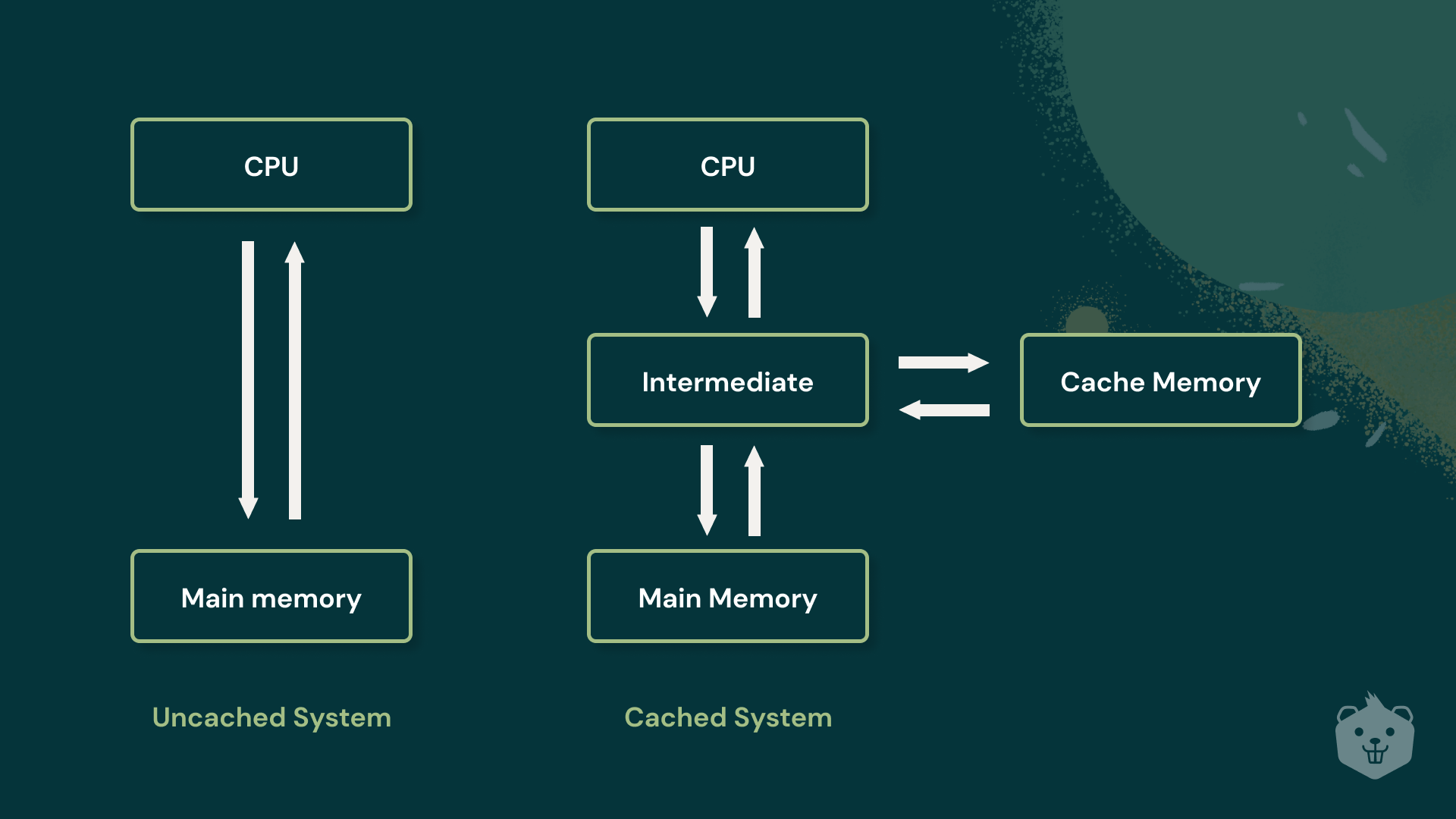Caching
What is Caching?
Definition:
“Caching” is a technique used in computing to store and retrieve data in a more expedited manner by keeping frequently accessed or computed data in a temporary storage location. The purpose of caching is to enhance performance, reduce latency, and optimize resource utilization. By storing copies of frequently used data closer to the point of access, caching minimizes the need to fetch the data from its original source, resulting in faster response times and improved overall system efficiency.
Analogy:
Think of caching as a librarian strategically placing popular books on a reserved shelf near the entrance. This ensures that frequently requested books are readily available without the need to traverse the entire library, analogous to retrieving data from its original source.
Further Description:
Caching can be applied at various levels within a computing system:
Browser Caching: Web browsers store copies of static files like images, stylesheets, and scripts locally on a user’s device. This reduces the need to download these files again when revisiting a website, leading to faster page loading times.
Content Delivery Networks (CDNs): CDNs cache content on servers strategically distributed across different geographical locations. This accelerates content delivery by serving it from a location closer to the end-user.
Database Caching: Database systems cache query results or frequently accessed data in memory, reducing the time it takes to retrieve information from disk storage.
Application-Level Caching: Applications can implement caching mechanisms to store frequently accessed data or computation results, enhancing response times and reducing server load.
Why is Caching Important?
Improved Performance: Caching significantly enhances the speed and responsiveness of applications by reducing the time needed to retrieve and deliver data.
Bandwidth Optimization: Caching minimizes the need to repeatedly transfer the same data over the network, conserving bandwidth and reducing latency.
Enhanced User Experience: Faster load times and quicker access to data contribute to a more satisfying user experience, especially in web applications and content delivery scenarios.
Resource Efficiency: Caching optimizes resource utilization by minimizing redundant data retrieval operations, which is crucial for systems with limited resources.
Examples and Usage:
Web Browser Caching: Browsers cache images, stylesheets, and scripts to expedite page loading for frequently visited websites.
CDN Caching: Content delivery networks cache website content, such as images and videos, on servers distributed globally to reduce latency and improve loading times.
Database Query Caching: Database management systems cache query results to accelerate data retrieval for commonly executed queries.
Application-Level Caching: Content management systems often cache rendered pages or components, speeding up the delivery of dynamic content.
Key Takeaways:
- Caching involves storing and retrieving frequently accessed or computed data to enhance performance and efficiency.
- It can be applied at various levels, including browser caching, CDNs, database caching, and application-level caching.
- Caching is crucial for improving system responsiveness, conserving bandwidth, and optimizing resource utilization.
- Examples include web browser caching, CDN caching, database query caching, and application-level caching.





